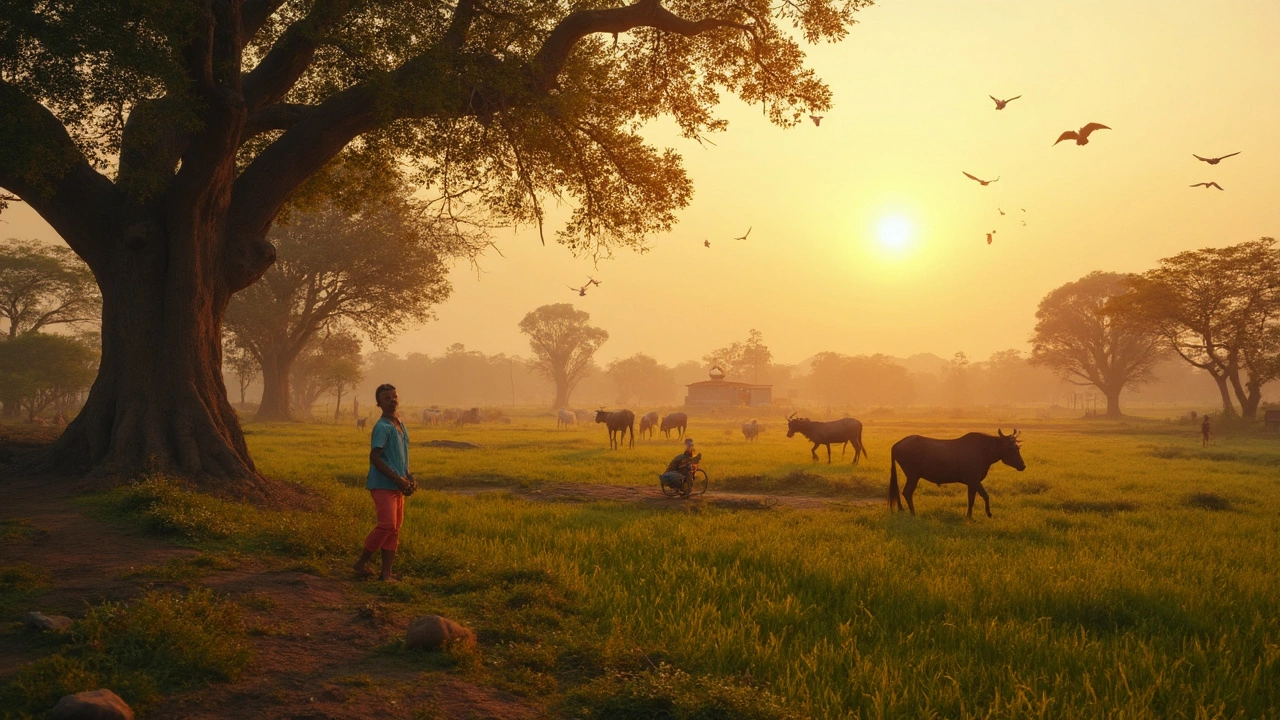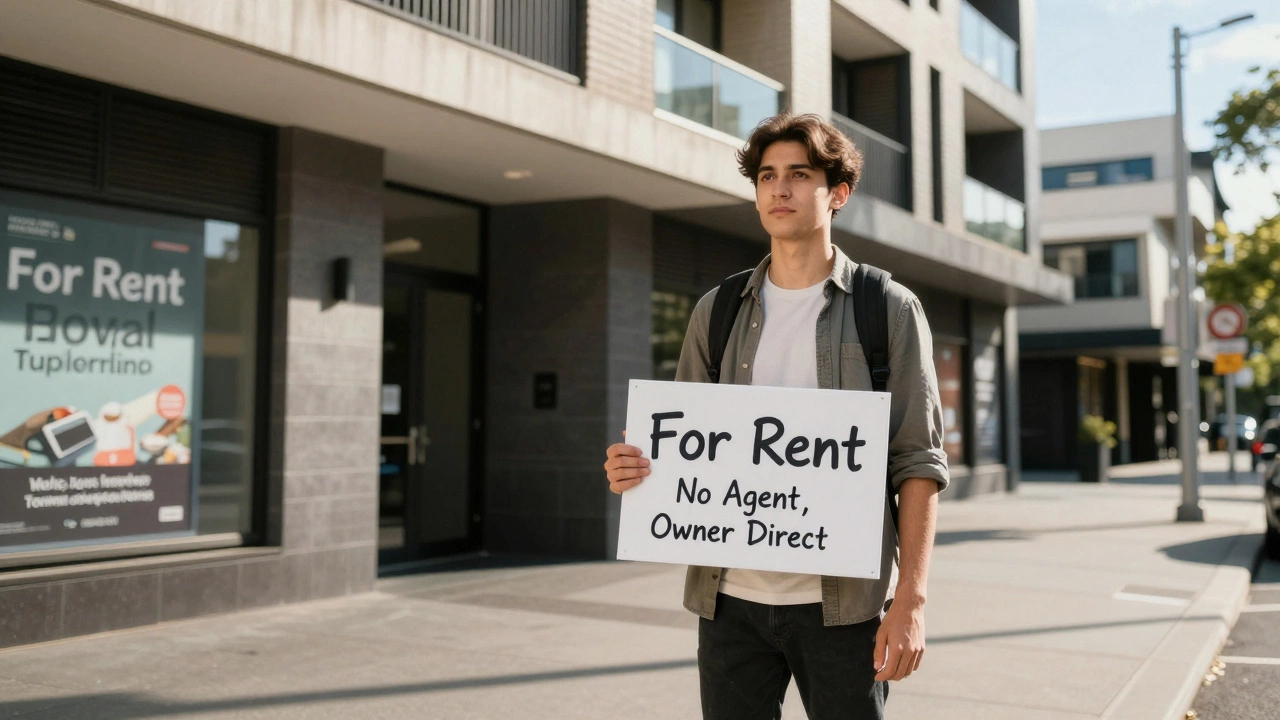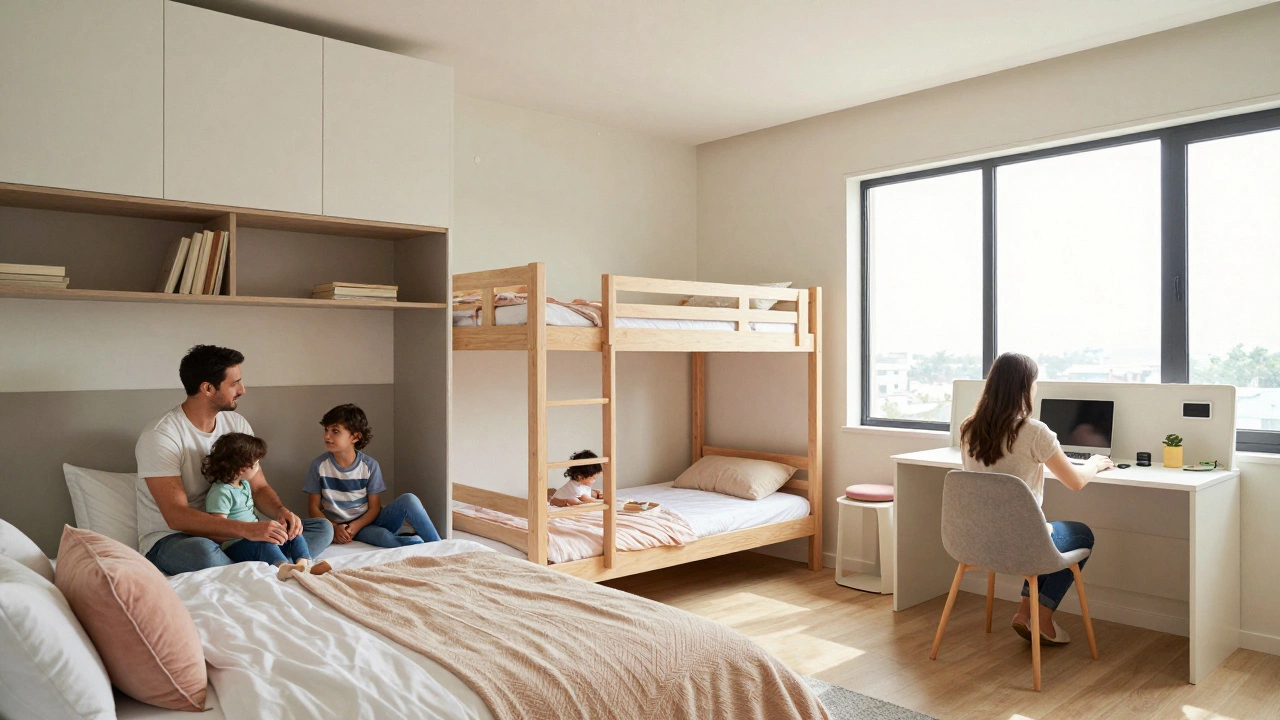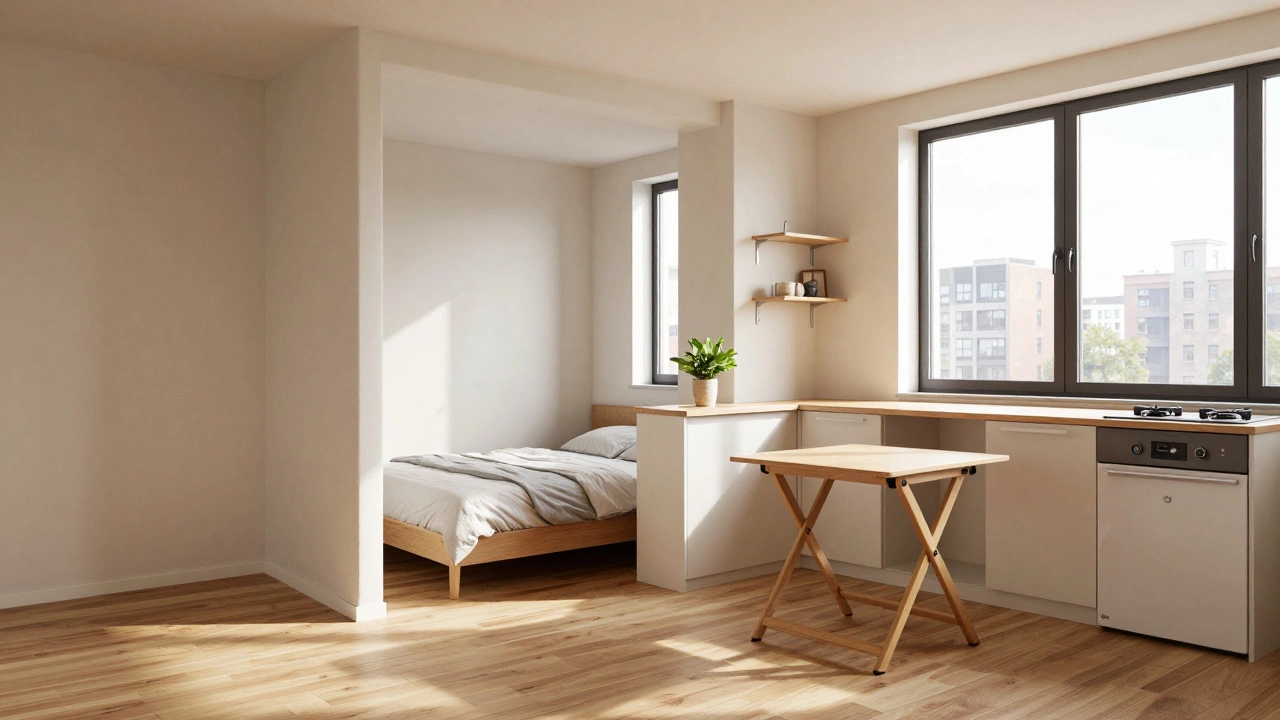Try searching for homes and you'll hit all kinds of terms: ranches, villas, bungalows, estates. It's easy to get confused, especially when agents throw around fancy words. With villas popping up for sale everywhere, people start asking—what's the real difference between a ranch and a villa?
Turns out, the gap is bigger than just the name. Ranches and villas are built for different lifestyles and even come with totally different vibes. One screams open land and farm life, while the other whispers comfort and sometimes a slice of luxury. But if you're buying, these differences can make or break how much you enjoy your next place. Let’s pull back the curtain and get clear: if you're comparing a ranch to a villa, what are you really looking at?
- What Makes a Ranch?
- How a Villa Stands Out
- Architecture and Layout
- Location: Country vs Comfort
- Lifestyle Differences
- Tips for Buyers: Picking Your Best Fit
What Makes a Ranch?
When you hear "ranch," think wide-open spaces, barns, livestock, and land that stretches as far as you can see. Ranches started out in the American West, shaped by cattle farming and horses, and they keep that "working land" spirit even today. The big draw isn’t the house, it’s all that land and what you can do with it.
Unlike a typical house, ranch properties usually sprawl over several acres—sometimes hundreds or even thousands. Most ranches include:
- A single-story main house (sometimes called a ranch-style house)
- Outbuildings such as barns, stables, and sheds
- Fields or pasture for grazing animals
- Space for riding, farming, or growing crops
Ranch homes might feel basic inside compared to villas—expect practical layouts, mudrooms for boots, and big kitchens made for family gatherings or feeding ranch hands.
If you’re skimming real estate listings, you’ll spot ranches in rural or semi-rural zones, far from city centers. They’re not about luxury features—they offer a lifestyle built around the outdoors and real work. Some ranches double as hobby farms, but plenty are operating businesses.
Here’s a quick look at what you usually find with ranch properties versus what you get with a typical suburban home:
| Typical Ranch | Typical Suburban Home |
|---|---|
| 10+ acres of land | 0.1 to 0.5 acres |
| Livestock and barns | Just a backyard |
| Focus on land use | Focus on indoor living |
| One-story house | One or two stories |
If your idea of fun is riding horses, working outside, or even running a small business off your property, a ranch is made for that life. Just remember: it's not a hands-off investment. Whether it’s mowing pasture, fixing fences, or tending animals, there’s always something going on at a ranch.
How a Villa Stands Out
So, what’s special about a villa anyway? First off, the word "villa" often paints a picture of stylish living. These homes usually come with a focus on privacy, comfort, and a little bit of class. You won’t find fields or cattle—villas are all about personal space, cozy rooms, and maybe even a private pool or garden.
Most villas are found in residential zones or gated communities. They’re set up for people who want comfort and convenience with less land to deal with. Forget huge barns or working farmland—a villa's main draw is how easy life can feel here. Want outdoor space? Think landscaped gardens or patios, not acres of ranch grass.
Here’s what makes a villa stand out from the usual homes on the market:
- villas for sale often feature modern layouts, big windows, and open-plan living spaces.
- You’ll see more amenities: pools, gyms, security, maybe even smart-home features.
- They often come with high-end finishes—think granite countertops, hardwood floors, and designer lighting.
- Villas usually have onsite parking and private yards.
- They're built close to city centers, malls, or schools, cutting down on commute times.
Take a look at this basic comparison for villas in today’s market:
| Feature | Typical Villa |
|---|---|
| Lot size | 1,500 - 10,000 sq. ft. |
| Main purpose | Private, leisure-focused living |
| Common amenities | Pool, gym, security, garden |
| Location | Urban/suburban, gated community |
| Average price (India) | ₹70 lakh - ₹5 crore (2025 data) |
Bottom line? Villas aim to deliver comfort, privacy, and easy maintenance. If you value a good lifestyle over tons of unused land, a villa just makes sense.
Architecture and Layout
Ranches and villas don’t just look different on the outside—the way they’re built and arranged inside shows you exactly what they’re meant for. Let's break it down so you know what you're walking into before you even book a visit.
If you step onto a ranch, the layout is all about working with the land. Ranch houses in the U.S. usually have long, low profiles. Most are single-story, making it easy to move equipment and keep things accessible. Open floor plans are big here, with the kitchen, dining, and living areas blending together. Bedrooms branch off from a central hallway. Large windows aren’t just for looks—they let you stare out at acres of fields or livestock. Older ranches often include barns, workshops, and extra utility buildings, all spaced far apart for convenience.
- Single-story, sprawling footprint
- Open floor plans—living, dining, kitchen all flow together
- Large windows looking out toward nature
- Functional outbuildings like barns, stables, and sheds
- Usually no fancy exterior details
Villas flip the script. The biggest thing you notice is design—villas usually focus on comfort, privacy, and style. While the number of floors can vary (some have one, others two), each room is purposefully planned for relaxation. Courtyards, patios, and balconies are almost standard, giving you private outdoor spots cushier than a ranch porch. If you tour new villas for sale, expect en-suite bathrooms, walk-in closets, and maybe a pool right by the living room. Everything feels put together, from the trim to the tilework.
- Compact or multi-level layouts
- Defined room separations—bedrooms, lounges, kitchens aren’t all in one area
- Private courtyards, patios, or gardens
- Designed details—arches, columns, decorative roofs
- Modern amenities like pools, spas, and high-end kitchens
Check out this table for a side-by-side comparison:
| Feature | Ranch | Villa |
|---|---|---|
| Stories | Usually one | One or two |
| Floorplan | Open, horizontal spread | Defined, sometimes vertical |
| Exterior | Simple, functional | Decorative, sometimes ornate |
| Outbuildings | Yes, for work/storage | Rare; focus is on living areas |
| Outdoor Space | Expansive, open | Private, landscaped |
| Main Purpose | Function, utility | Relaxation, comfort |
If you value space to spread out and run things, ranches win. If you lean toward luxury and clever use of space, villas will fit you better. Building for lifestyle is right at the heart of both options. So don’t just look at square footage—walk the property and see how the rooms connect to each other and the outdoors.
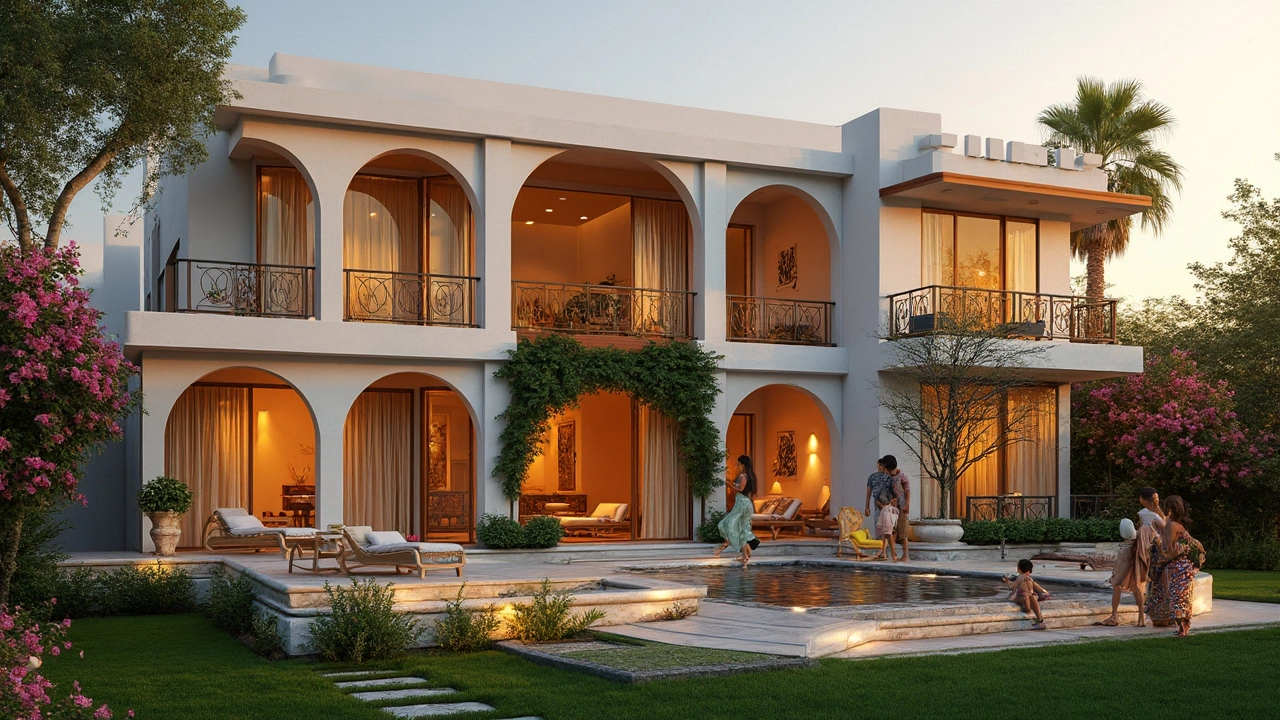
Location: Country vs Comfort
If you pit a ranch against a villa, location jumps out as the clearest difference. Ranches are usually sprawled out in the countryside or on the edge of smaller towns. They’re about open space—think acres of land, sometimes surrounded by fields or forests. In the U.S., ranches often start at 10 acres or more, with some stretching to thousands. The location fits folks who want quiet, privacy, and lots of room, maybe for horses, cattle, or farming stuff.
Villas, on the other hand, tend to pop up where life is a bit more comfortable: nice neighborhoods, holiday spots, or on golf courses. They’re about convenience, not just space. You’ll find them close to shops, schools, and sometimes within gated communities where security is tight and amenities are slick. In places like Spain and Italy, villas are a go-to for family holidays, sitting right on the coast or tucked in leafy suburbs.
“Ranches speak to those seeking independence and wide horizons, while villas are for comfort lovers looking for easy living and amenities at arm’s reach,” says Nicolas Pechet, a real estate market analyst.
Here’s a simple breakdown that shows the main differences in location between ranches and villas:
| Property Type | Usual Location | Average Land Size | Key Surroundings |
|---|---|---|---|
| Ranch | Countryside, rural, outskirts of towns | 10+ acres | Farms, forests, open fields |
| Villa | Suburban, urban, resort areas | 0.2–2 acres | Shops, schools, beaches, gated communities |
If you’re hunting villas for sale, remember: a villa’s location usually means quicker commutes, easier access to daily needs, and sometimes access to community extras like swimming pools or tennis courts. If country air, no neighbors, and space to roam sound better, a ranch wins out. Think about what matters more—solitude and land, or comfort and amenities—before you even set up your first viewing.
Lifestyle Differences
This is where the ranch and villa story gets interesting. Owning a ranch almost always means getting hands-on with land and animals. Ranches aren't just pretty homes—they usually come with chores: think riding tractors, feeding livestock, fixing fences, and handling some sort of land work. Even a smaller ranch can soak up hours of your week with maintenance alone.
Villas are a different beast. These places focus on comfort, privacy, and sometimes a hint of luxury without the heavy workload. Most villas are found in gated communities or suburban neighborhoods where things like lawn care and security often get handled by someone else. Instead of fixing fences, you’re relaxing by the pool or enjoying the indoor-outdoor spaces.
The two lifestyles even attract different buyers. According to a 2024 HomeBuyers Survey, about 67% of ranch purchasers wanted land for hobbies, farming, or keeping horses, while 78% of villa owners said they chose villas for easy living, less hassle, and low maintenance demands.
If you're thinking about what you want from daily life, here’s how the lifestyles break down:
- Villas for sale target folks who want privacy, nice finishes, and some shared amenities like clubhouses or tennis courts—without the dirt-under-your-nails side of land ownership.
- Ranches usually call to those looking for space, outdoor freedom, and maybe even their own little piece of the wild.
When you look at values and work involved, check out this quick side-by-side:
| Feature | Ranch | Villa |
|---|---|---|
| Daily chores | Yes, often outdoors | Very limited, often handled |
| Community life | Usually private, rural | Often part of a shared community |
| Amenities | No, unless self-created | Common: pool, gym, security |
| Main crowd | Outdoor, self-sufficient types | Comfort-seekers and retirees |
If you picture yourself grilling by the pool with zero yard work, villas fit best. Dream of sunrise rides and fresh air? A ranch might be calling you. Your daily scene is shaped just as much by what you buy as where it sits.
Tips for Buyers: Picking Your Best Fit
If you're torn between a ranch and a villa, don’t just chase what looks good on paper. Breaking down your priorities and lifestyle makes the choice a lot easier. Here’s how to get clear about which place checks your boxes.
- Space Needs: If you want big open land for horses, gardening, or maybe even a hobby farm, a ranch gives you room to spread out. Villas focus way more on indoor living—think private courtyards, pools, maybe a shared clubhouse if it’s in a gated community.
- Maintenance Level: Truth is, ranches usually eat up more time. You may be looking at landscaping, fences, even managing livestock. Villas? Less yard, smaller grounds, often with maintenance crews or homeowners associations that keep things tidy.
- Location: Love the quiet? Ranches sit out in rural areas, miles from city noise. Villas, especially those on the market, are closer to city perks—restaurants, schools, shopping. Your daily commute could be the final dealbreaker.
- Social Life: Villas sometimes come with built-in neighbors and social clubs—great for someone who likes a sense of community. Ranches lean private, so plan on driving to see friends or get to events.
- Investment Angle: Properties in the villa category, especially those close to city centers or tourist zones, tend to hold value or rent out easier. Rural ranches can be more about land appreciation, but might sit on the market longer if you need to sell fast.
Take a look at this simple breakdown. It might help you spot the real-world differences faster:
| Feature | Ranch | Villa |
|---|---|---|
| Typical Location | Rural/suburban | Urban/suburban |
| Average Lot Size | 5+ acres | <1 acre |
| Maintenance | High | Low to moderate |
| Common Features | Barns, fencing, land | Private pools, courtyards |
| Social/Community | Private, quiet | Community amenities possible |
| Resale Appeal | Depends on location/market | Usually strong in high-demand zones |
If you’re looking at villas for sale, be clear: are you looking for fuss-free luxury and city life, or dreaming of rolling hills and self-sufficiency? Your answer shapes not just the kind of property you’ll buy, but also your daily routine for years ahead.
